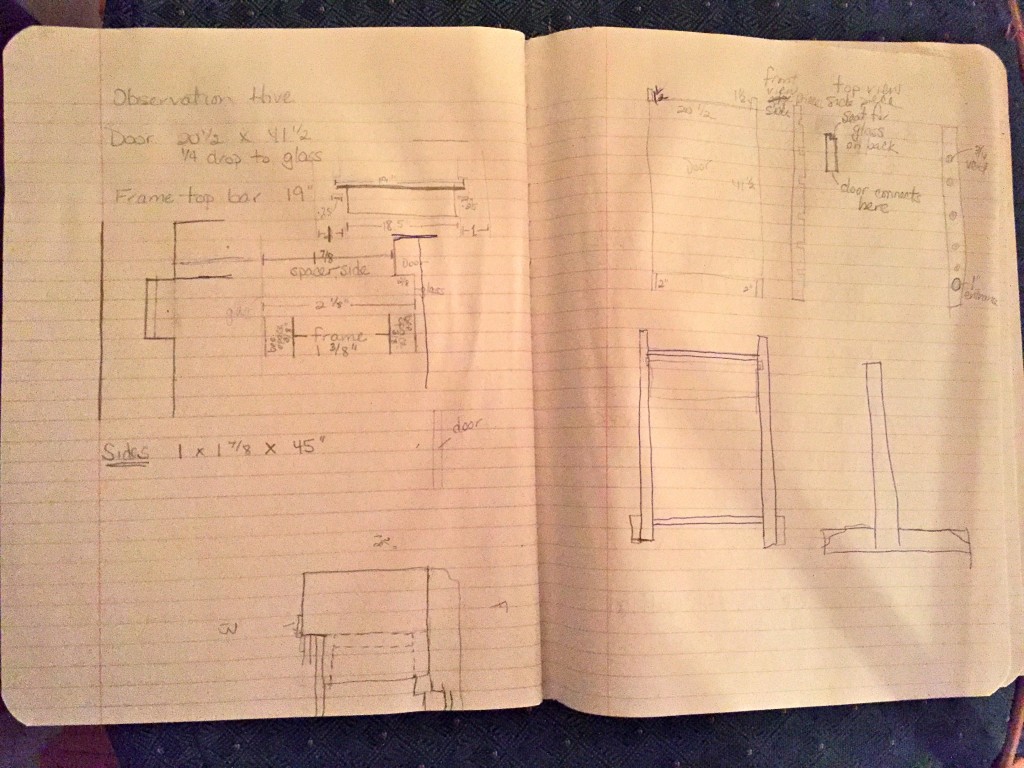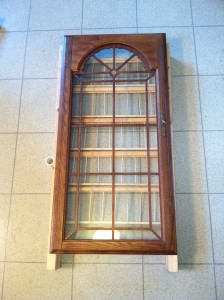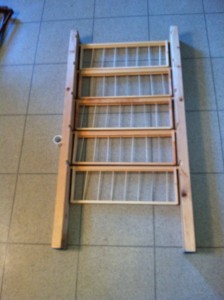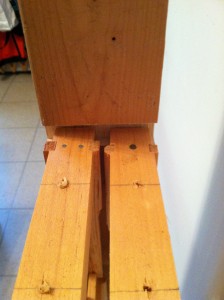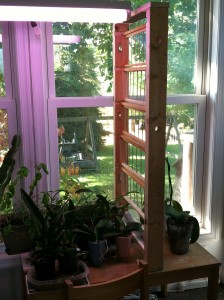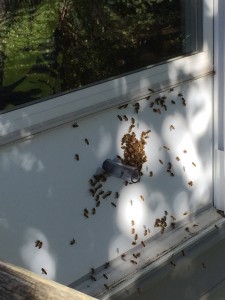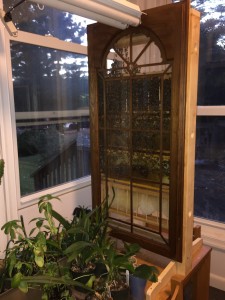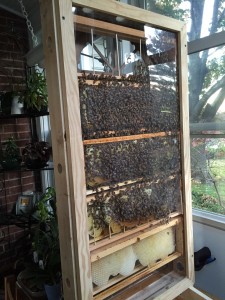I have always wanted an observation hive. When I first started keeping bees, I was advised not to start with one as they are more difficult to keep thriving than a full size colony. Then, when I began to look at the cost of assembled observations hive, I pretty much thought I couldn’t afford it. But then a thought began to take hold: What if I build my own? How could I build my own with the limited tools and skills I have?
Eventually I decided that if I started with a cabinet door the right size, I would be able to do it. So then I spent a few weeks searching for just the right size door. They aren’t easy to come by! Fortunately, Todd had one laying around in his shed that he needed to get rid of. After a few sessions with the Honeybee Wranglers to work out the details, I ended up with the following “drawings”:
Using found lumber, I constructed the main frame from 2 x 4’s with notches cut to hang the frames and 3 screened holes on each side for ventilation. The top has 3 holes sized to fit a 1 lb honey jar so I can feed the bees. The bottom is screened. The entrance is a 1″ x 12″ clear PVC pipe so I can see the bees coming in and out.
October 26th was move in day! Kristien came over and helped me load up the hive. I learned what happens if I don’t drill the pilot holes deep enough! The bees could escape! Argh!! Kristien helped with a quick repair and the observation hive, loaded with bees, moved into my house. The bees that I put in the hive are the swarm we caught at the end of August (which I think may have been my own bees that started out as a Nuc from Allen with a California queen).
It seemed, at first, as if the bees did not like being exposed to the light all the time and were having a lot of difficulty finding the entrance. For the first week or so, I kept the hive covered with beach towels and only peeked in occasionally. Then I removed the beach towels entirely. The bees have been fine. Looking back on it, I think they were just adjusting to a new space. The frenetic activity was just their way of checking out the new digs.
I tried to feed them as soon as they were set up but because the comb was a full frame plus a few inches from the food, the bees seemed to have difficulty finding it. Again Kristien to the rescue! She suggested that I hang a string from the feeder to the top of the comb. The bees use that to climb to the food and dine heartily!
